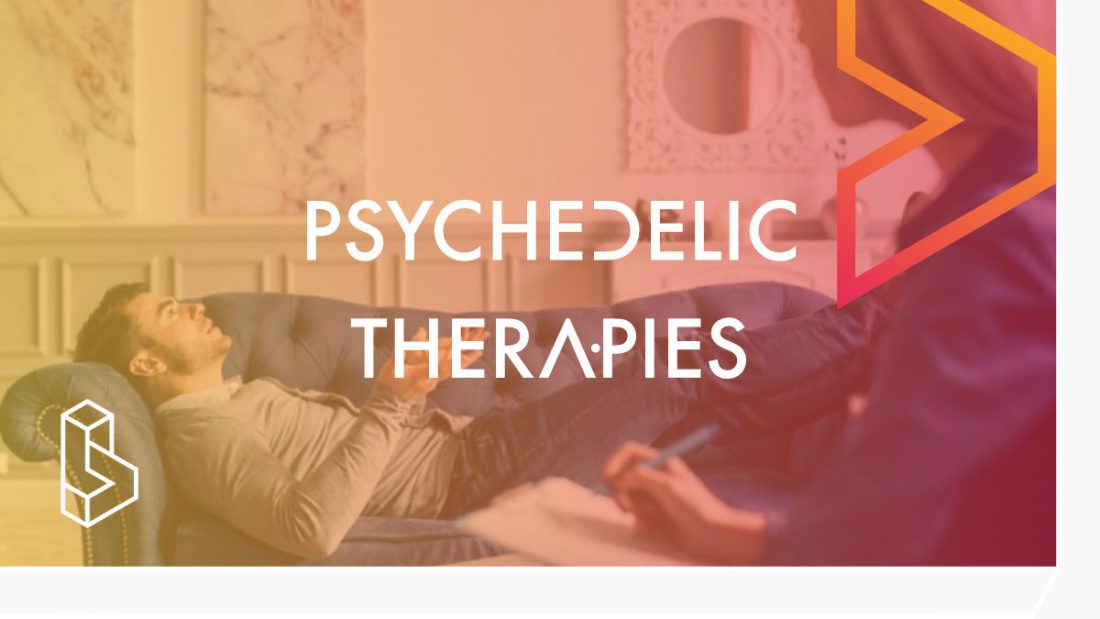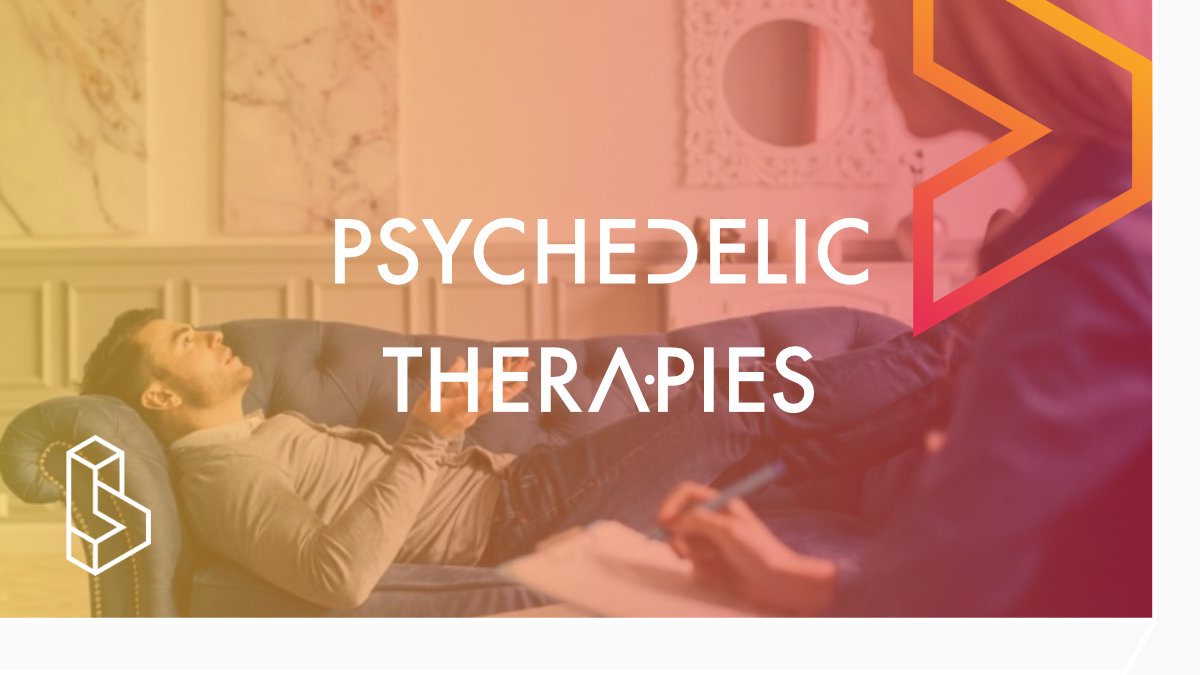
Key Insights
- Conventional medications, such as antidepressants, can have numerous negative side effects and evidence is emerging on their longer term effects. Conversely, psychedelic-study participants have consistently reported few or no negative side effects from psychedelic treatments, and psychedelics are acknowledged to have a low potential for abuse or dependence.
- The challenges involved in developing psychedelic therapies involves converting an unstable plant-based medicine into a consistent and replicable pharmaceutical drug that can secure FDA approval so as to be covered by insurance. Otherwise, the costs associated with the treatment and the accompanying psychological support from trained therapists could be prohibitive.
- During a psychedelic-assisted therapy session, ‘set’ and ‘setting’ are of central importance to the patient’s experience. ‘Set’ refers to the patient’s mind-set, while ‘setting’ refers to the context or environment in which the therapy session takes place. Following the supervised psychedelic ‘trip’, integration of the experience via further talk therapies is vital to the success of the treatment.

Author: Floris Wolswijk is the founder of Blossom. He started Blossom in 2019 to help translate psychedelic research to a broader audience. Since then, he has grown the database to encompass 2000 papers and hundreds of other valuable resources. Floris has an MSc in Psychology and offers psychedelic-assisted coaching at FLO.
Pharmaceutical drugs may have several adverse side effects. Selective serotonin reuptake inhibitors (SSRIs), a class of antidepressants, can be particularly detrimental to a patient in the short term with little being known about the consequences of long-term consumption. Opioids, although a godsend for pain relief, have proven to be addictive and more deadly than heroin in the US. Psychiatrists need novel treatments with higher safety profiles, and studies have shown psychedelic medicines to have a low risk of dependence.
The challenges associated with developing psychedelic medicines are similar to those for medicinal cannabis: the obstacle of converting a psychoactive plant into a consistent and replicable pharmaceutical product. This is essential for treatments to be covered by insurance providers, with the resources required for psychedelic-assisted therapy beyond the reach of many patients.
In psychedelic-assisted therapy, ‘set’ and ‘setting’ are central to the patient’s experience and outcomes. ‘Set’ refers to the patient’s mindset, while ‘setting’ refers to the context or environment in which the therapy session takes place. Although critical components to the experience itself, subsequent integration through talk therapies is vital to the success of the treatment.
Psychedelic Semantics
As regulatory landscapes emerge and evolve, the psychedelics industry is subjected to a series of semantics. This report frequently references both psychedelic-assisted therapy and psychedelic treatments, with the latter encompassing medications that can be self-administered and used in combination with talk therapy. We have categorised these treatments into three subsections:
- Psychedelic-assisted psychotherapy
- Infusion therapy
- Available on prescription
Psychedelic-assisted therapy
The term psychedelic-assisted psychotherapy, or psychedelic-assisted therapy, refers to the consumption of a psychedelic substance in combination with several sessions with a therapist. The number of sessions with a psychedelic, usually lasting a full day, varies between one and three, with two sessions being the most commonly used regimen. The total number of supporting therapy sessions, both before and after, usually number between six and ten.
Examples of this treatment include COMPASS Pathways’ protocol for major depressive disorder, which the FDA designated a breakthrough therapy. Clinical trials are also being conducted to develop MDMA-assisted psychotherapy for PTSD, with the FDA expected to approve the treatment in 2023.
Infusion Therapy
Infusion therapy involves the intravenous administration of psychedelic substances, either in combination with talk therapy or as a stand-alone treatment. Ketamine infusions were recently approved in the US and EU, but must occur in controlled medical settings. In 2021, several companies started clinical trials to investigate the potential of intravenous DMT, to investigate the drug’s pharmacokinetic parameters and also whether continuous intravenous infusion extends the compound’s efficacy.
Available on prescription
Although psychedelic medicines are not currently widely available through pharmacies or dispensaries, several companies are developing products patients can self-administer at home. During the COVID-19 pandemic, several ketamine providers shipped patients their ketamine at home and they provided a video link in order to still provide guidance for their patients.
Making psychedelics available on prescription would substantially reduce the cost of treatments and subsequently increase their adoption. MindMed is conducting clinical trials for its LSD microdosing treatment, which it hopes will be available over-the-counter for ADHD.
The Importance of Set, Setting and Integration
As previously stated, ‘set’, ‘setting’ and ‘dose’ are key to a patient’s experience of a therapy session involving psychedelics.
‘Set’ refers to mindset, a complex mix of expectation and mood, personality and past experience. If someone comes into a psychedelic session with a lot of grief, the session will unfold quite differently from when someone comes well-rested, regardless of the setting and dose.
‘Setting’ refers to the context in which the session takes place, including basic factors like the comfort and aesthetic of the room, and more complex factors like the quality of the relationship with the clinicians and the atmosphere they help to create. Even though most clinical trials take place in hospitals or research institutes, the session rooms are made as comfortable and homely as possible. There are typically two therapists in attendance. The patient can sit or lie on a couch and is often encouraged to wear an eye mask, and/or listen to a relaxing playlist of music.
Oral ingestion of a capsule of synthesised psychedelic compound (e.g. psilocybin) is the most common route of administration, and the session will typically last for up to eight hours.
‘Dose’ refers to the amount of psychedelic that is taken. In many trials, a high-dose psychedelic session or two to three high-dose sessions (usually 20–30 milligram psilocybin or 35 milligram ketamine per 70 kilogram body weight) are conducted. Several studies are showing no difference between men and women in their reaction to psychedelics, besides the difference in average weight, and some genetic factors have been found that influence the reaction to a dose.
Immediately after the psychedelic session and in the following days, a process of ‘integration’ is facilitated by the therapist. During these conversations, the patient has the opportunity to process, make sense of, and give meaningful expression to their psychedelic experience. This is a vital part of the therapy and is employed in nearly all studies with the notable exception of many ketamine studies.

